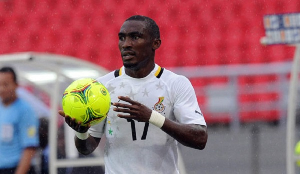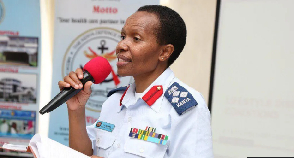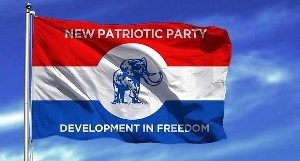- Home - News
- TWI News | TV
- Polls
- Year In Review
- News Archive
- Crime & Punishment
- Politics
- Regional
- Editorial
- Health
- Ghanaians Abroad
- Tabloid
- Africa
- Religion
- Election 2020
- Coronavirus
- News Videos | TV
- Photo Archives
- News Headlines
- Press Release
General News of Monday, 17 September 2007
Source: Kwaku Osabutey ANNY
Ghana facing ‘silent’ water crisis?
Ghana is facing a serious water crisis that could have an adverse effect on its Millennium Development Goals rating, according to a report from the World Bank.
The report which estimates that approximately half of the country’s population does not have access to safe drinking water has recommended that proper structures be put in place by government to ensure that water supplied to both domestic and commercial consumers is adequate and safe for their consumption.
Complaints of water shortage in the country have been rife with the hardest hit areas in the capital being Ashiaman and surrounding communities in the Tema area, McCarthy Hill and Adenta. But the latter is said to be the hardest hit as residents in the area always complain of spending huge sums of money to contract water tankers to supply them with water.
The situation in most communities outside the region is even worse with some of them not having access to drinking water at all let alone the quality.
Cape Coast and surrounding communities are examples of the worsening water crisis facing most rural dwellers. The situation which could last for almost four months has never received any better solution, despite promises from both past and present governments.
The dailyEXPRESS in a recent publication highlighted the water problem confronting the people of Komenda, a fishing community in the region Central Region.
With no pipe borne water facilities, majority of residents rely on a community reservoir called ‘pup’ believed to be contaminated for their household chores.
Dr. Paa Kwesi Ndoum, MP for the area, in a follow up interview confirmed the existing problem but said structures have been put in place by government to ensure that the situation is brought under control by December this year.
Meanwhile the World Bank report estimates that access to water in 2005 was approximately 53% for those in the rural area and, that of the urban supply estimated at 58%, representing a drop of some 3% from the previous year.
The report also said water supply in the urban areas is characterized by intermittent supply, inability to extend supply to new customers, and weak financial performance by the Ghana Water Company Limited.
The company which has come under fierce public criticisms operates 82 urban water supply systems covering approximately 8 million, or 40% of the country’s 20 million or more population.
However, obsolete facilities that stretch the utility’s ability to deliver service to an urban population increasing at an average annual rate of 3.5% was identified as a considerable challenge facing the water management system of the company. .
The figure also explains the disparity in terms of quality and adequate supply of water in both the rural and urban areas, with the former being the worst hit in terms of the quality and adequacy.
The report noted that the Ghana Water Company is one of the poorest performing state own enterprises with no new capital investment.
Two factors, namely the poor state of infrastructure due to long period of disinvestment which is reflected in a high frequency of ‘pipe burst’ and system losses, account for half of its total production.
The loss falls far below the target set for the company by the Public Utility Regulatory Commission (PURC) at 45% production, which is significantly greater than the 25---35% benchmark established internationally.
The system losses are evenly split between unaccounted for water in the areas of damaged water mines and distribution lines.
Another problem identified is the attitude of most customers who through illegal connection get the water into their homes and, those with metres who continue to default in paying their bills.
This has somehow affected the collection rate of 75% during the past years which has added to the poor management performance of the company.










